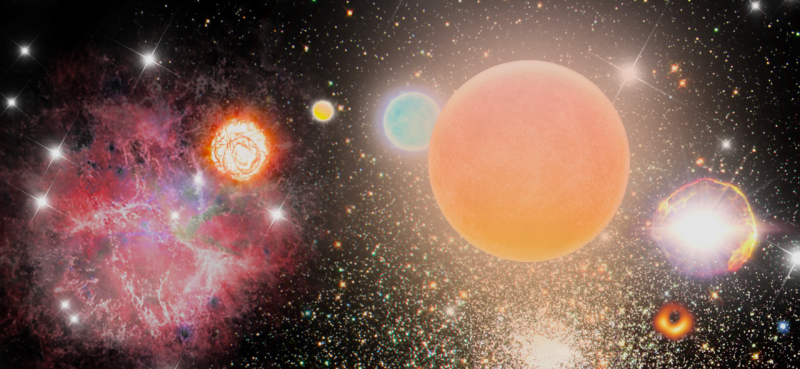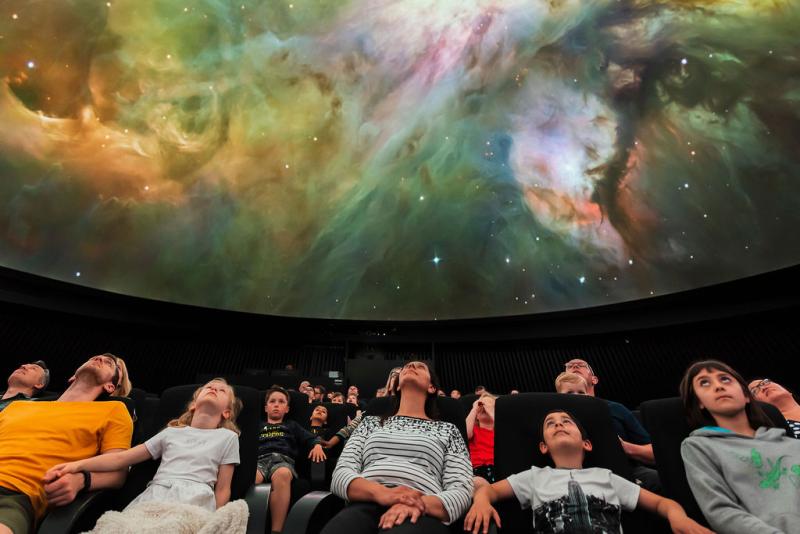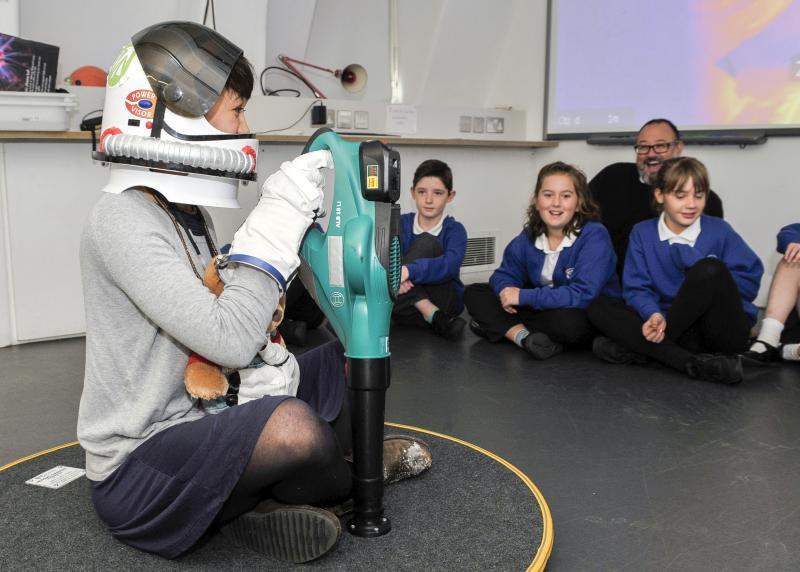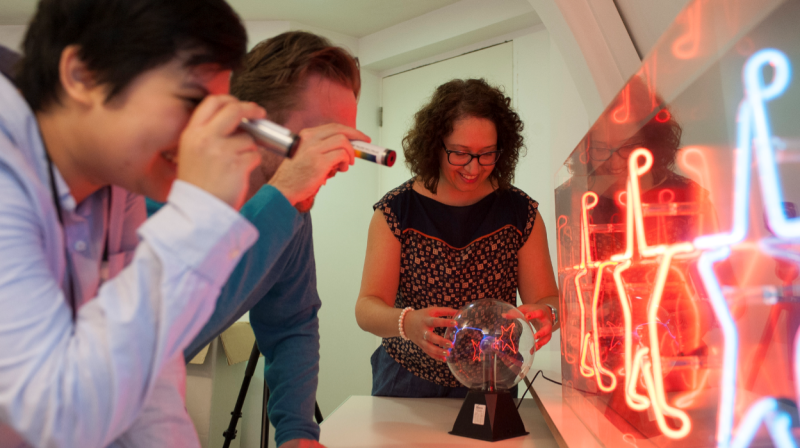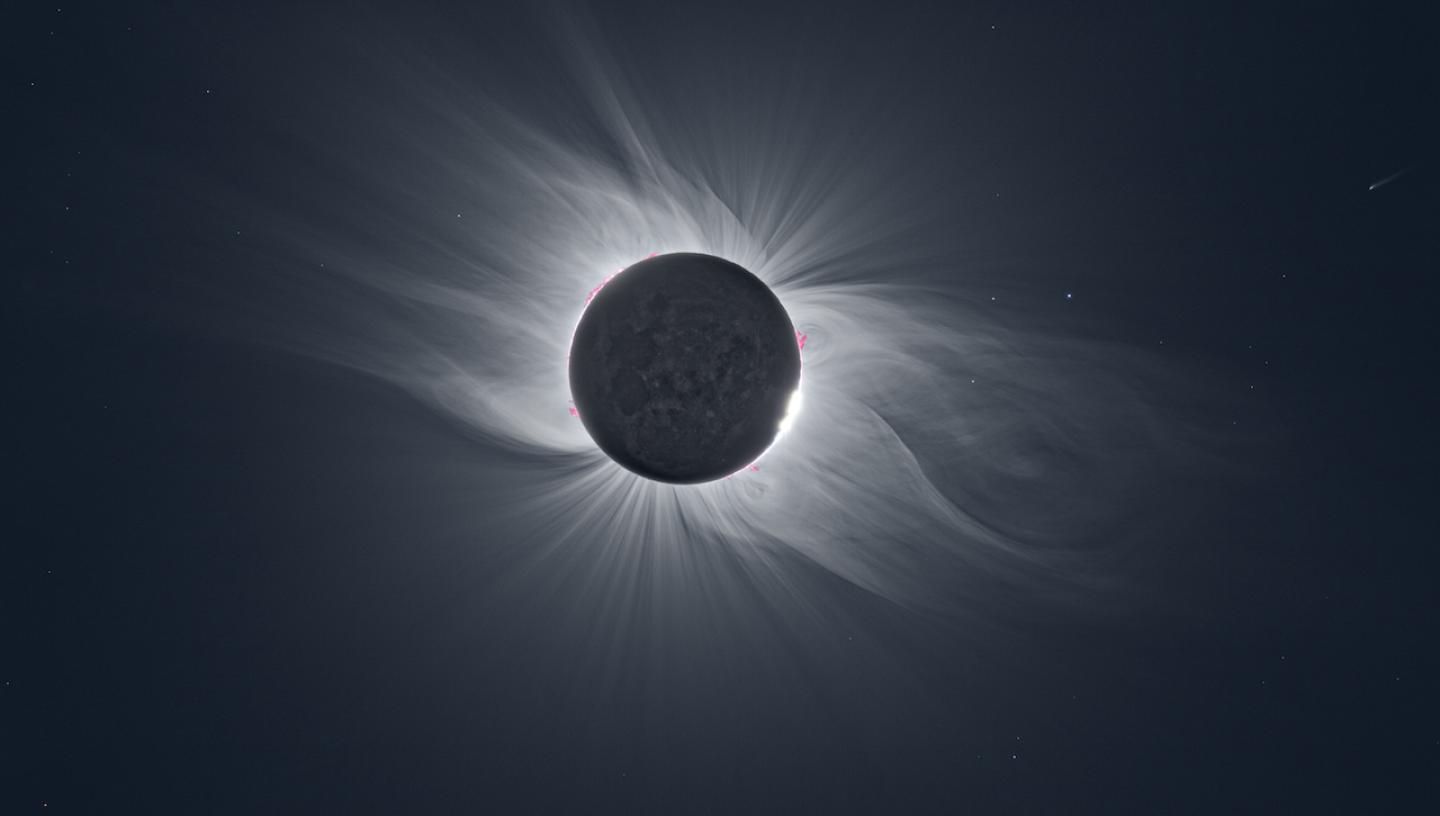
Discover what to see in the night sky in May 2022, including a total lunar eclipse and a cluster of stars
Top 3 things to see in the night sky in May
- Beginning of the month - Explore the spectacular star cluster M5
- 6 May - It's the peak of the Eta Aquariid meteor shower
- 16 May - See the total lunar eclipse
(Details given are for London and may vary for other parts of the UK)
Look Up! Podcast
Subscribe and listen to the Royal Observatory Greenwich's podcast Look Up! As well as taking you through what to see in the night sky each month, Royal Observatory Greenwich astronomers pick a topic to talk about.
For May they're talking about the largest comet ever discovered and that Mars doesn't have a speed of sound... it has two! Have a listen below, then vote for your favourite story from this episode on our Twitter poll (@ROGAstronomers) during the first week of May.
Our podcast is available on iTunes and SoundCloud
Astronomy in May 2022: key events and what to see
Beginning of the month: Explore the globular cluster M5
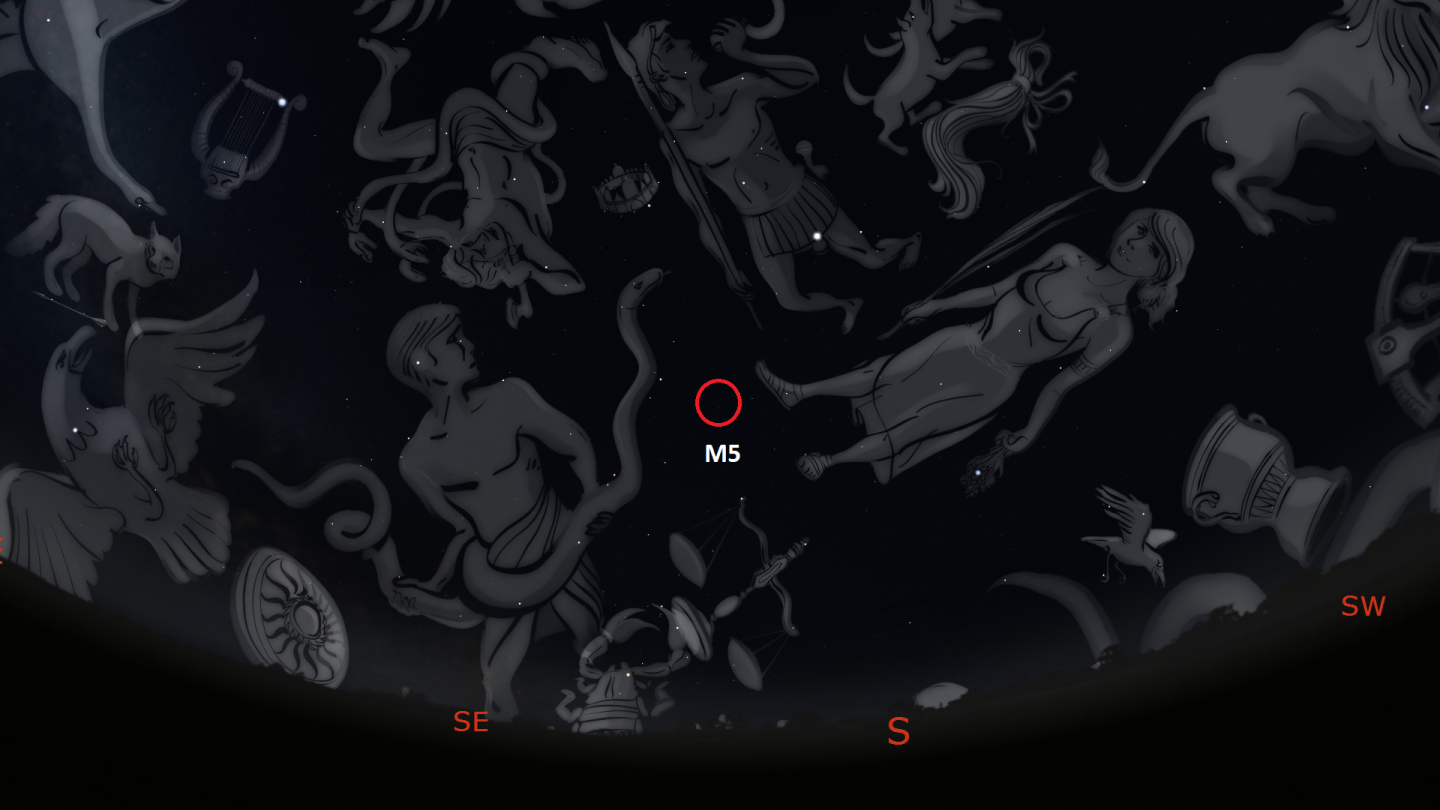
The last day of April brought with it a new moon, so the start of May is the best time to view fainter, deep-sky objects like nebulae and galaxies. The globular cluster M5 is ideally placed at this time of year and will be visible through a pair of binoculars. A globular cluster is a collection of stars tightly bound by gravity, and M5 contains anywhere between 100 and 500 thousand stars.
It sits around 25,000 light years away from us, forming part of a halo around the centre of our galaxy. It will be visible throughout the month, becoming visible after sunset in the eastern sky. It can be found just to the right of the constellation of Serpens, the snake held by the constellation Ophiuchus, which borders it. The sun will rise before M5 sets, meaning that it will be up all night long.
6 May: It's the peak of the Eta Aquariid meteor shower
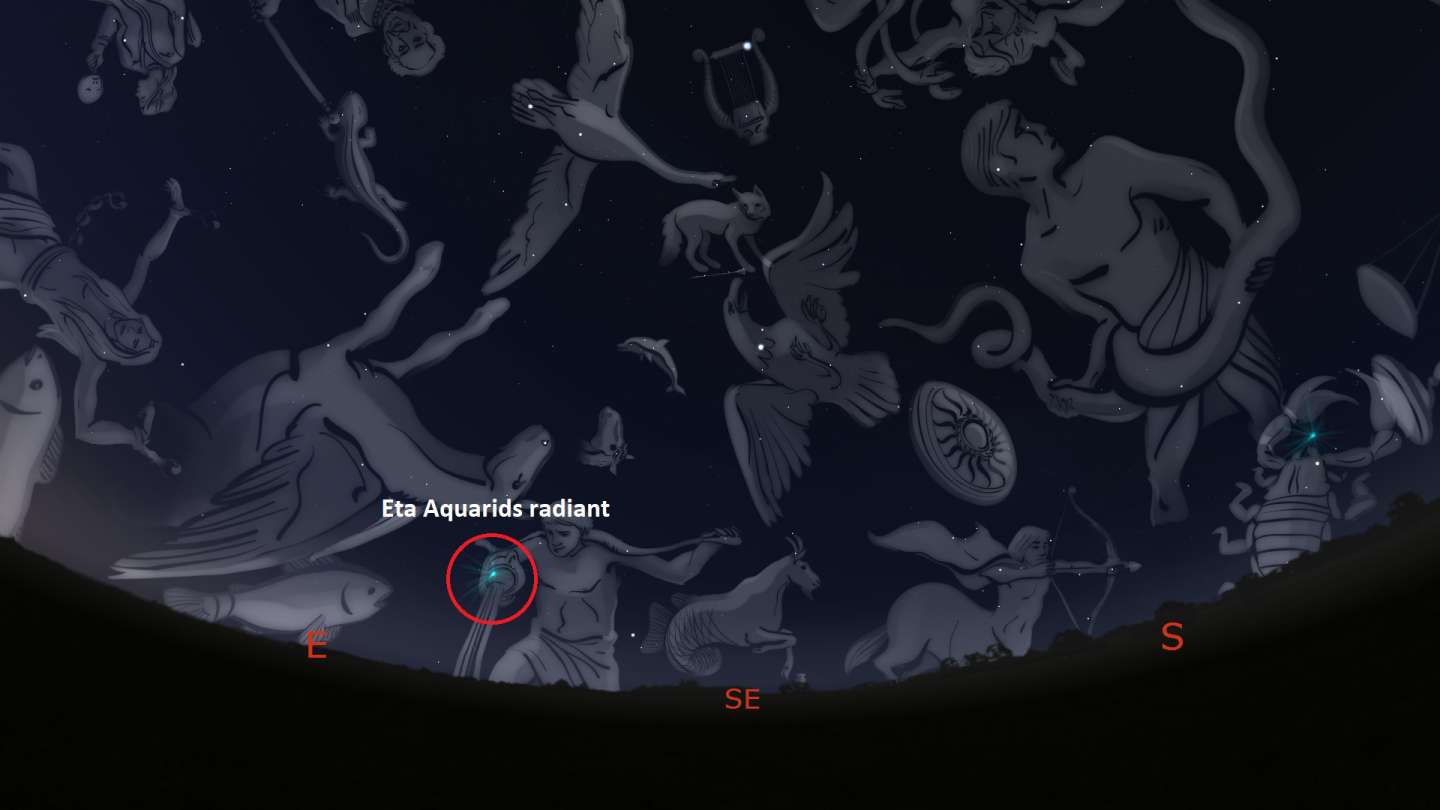
When it comes to viewing astronomical events, this month is one of late nights and early starts. The 6th of May will see the peak of the Eta Aquariid meteor shower, with 40 meteors per hour emanating from the constellation of Aquarius. The only catch is that the shower will only be visible from the UK between around 2:30 and 4:30am, with the radiant point of the shower rising from the eastern horizon at 2:37 and dawn breaking just over two hours later at 4:42.
The meteors of this shower originate from the material left behind by none other than Halley’s Comet, the famous short-period comet discovered by the second Astronomer Royal Edmond Halley.
16 May: Watch the total lunar eclipse
The 16th of May will present us with a total lunar eclipse. This occurs when the full moon moves into the Earth’s shadow, meaning that the only sunlight that can reach the Moon is the red light that is unaffected by the Earth’s atmosphere as it passes through, unlike blue light which is easily scattered by the gases in the air. As a result, during a total lunar eclipse the Moon appears to turn an eerie shade of red.
These events are also sometimes known as blood moons. This lunar eclipse is definitely one for the late-nighters and the early starters, since it will begin at around 3:30am on the 16th, reaching its totality one hour later at 4:30, before setting below the horizon just after 5am. From London, the Moon will never be higher than 5 degrees above the horizon during totality, so be sure to find a clear south-western horizon if you’re planning to view this eclipse of our mighty Moon.
End of the month: Spot a galactic whirlpool
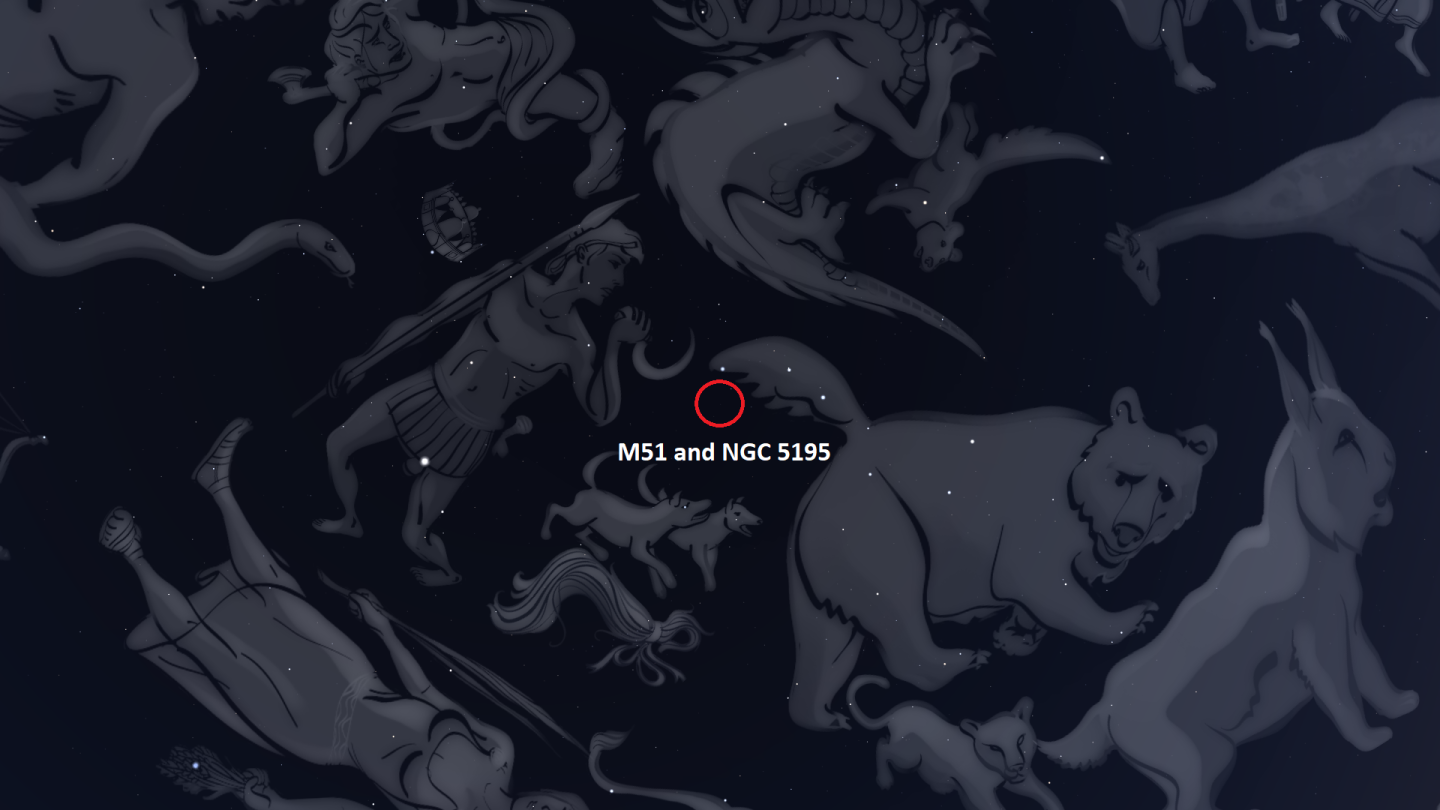
To end off your month of stargazing, keep an eye out for M51. Better known as the Whirlpool Galaxy, it is a majestic spiral galaxy with long, winding spiral arms looking at the observer almost perfectly face-on. Its well-defined shape and structure has earned it the title of a grand design spiral galaxy.
At its outermost tip sits another galaxy, a small yellowish structure called NGC 5195. These two galaxies can be viewed through a small telescope if the viewing conditions are good. Find them at the tip of the tail of Ursa Major, the constellation of the Great Bear. M51 sits beside the bright star at the tip of the tail, Alkaid.
Southern hemisphere: Find a dusty nebula in the sky

For those in the southern hemisphere, last month we recommended taking a look at the Jewel Box, an open star cluster in the constellation of Crux. This month, why not take a closer look at a patch of sky just beneath the Jewel Box after 9pm local time. You won’t be able to see much at all, and that’s the point.
This patch of sky contains the Coalsack Nebula, a dark nebula with molecular clouds so dense that it blocks the light of anything behind it from reaching the Earth. It is the most prominent dark nebula in our skies, and appears as a patch of sky that is distinctly darker than the sky around it; no stars, no light, just pure darkness. It will be visible throughout May, so do look out for it on a clear night.
The Moon's phases this month
- 9 May: first quarter (1:21 am)
- 16 May: full moon (5:14 am)
- 22 May: last quarter (7:43 pm)
- 30 May: new moon (12:30pm)
If you're a fan of the Moon, then see the winning and shortlisted images in the 'Our Moon' category of the 2021 Astronomy Photographer of the Year competition, all featured in a new exhibition at the National Maritime Museum.
Stargazing Tips
- When looking at faint objects such as stars, nebulae, the Milky Way and other galaxies it is important to allow your eyes to adapt to the dark – so that you can achieve better night vision.
- Allow 15 minutes for your eyes to become sensitive in the dark and remember not to look at your mobile phone or any other bright device when stargazing.
- If you're using a star app on your phone, switch on the red night vision mode.
See our range of observing equipment
Share your pictures
This month's banner image is 'The Sun sharing its Crown with a Comet' by Vincent Bouchama. It is one of the shortlisted images from the 2021 Astronomy Photographer of the Year competition.
Do you have any images of the night sky? If so, why not share your photos via our Royal Observatory Astrophotography Facebook group.
You can also connect with us via Twitter: @ROGAstronomers
Planetarium Shows
Join us for live planetarium shows
Royal Observatory Greenwich YouTube Channel
Subscribe to our YouTube channel and join us on a journey through time and space as we explore our Universe. You'll find a selection of videos on our channel, including our Observatory Online video series in which our astronomers explore different topics in astronomy and space exploration.
Resources for teachers and students
The Royal Observatory Greenwich's learning team has also created:
- Free animated videos that answer the biggest questions in astronomy and free resources to go alongside them.
- A whole host of podcasts featuring interviews with real space scientists, astronauts and active researchers working in UK universities.
- A 'learning at home' hub which contains a suite of resources for you to use at home.



